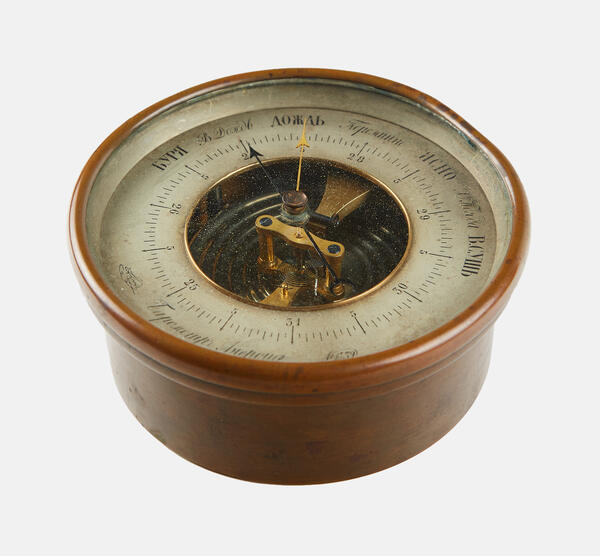The collection of the Rusanov House Museum includes a barometer — an instrument that is used to measure air pressure.
Galileo Galilei was the first to introduce the idea of a weather forecasting device, though he never developed one. It was not until 1643 that his students Evangelista Torricelli and Vincenzo Viviani managed to implement the great scientist’s idea. Torricelli was the first to prove that air has weight. Together with his assistant Viviani he conducted his experiments using mercury in a tube that was sealed at one end. The open bottom of the tube was immersed in a mercury reservoir. The mercury in the tube rose, creating a vacuum at the top. As the pressure increased, it forced the mercury up the tube and vice versa. Torricelli’s invention became the first mercury barometer.
The word barometer is derived from the Ancient Greek βάρος (báros), meaning “weight”, and μέτρον (métron), meaning “measure”. In liquid barometers air pressure can be measured by the height of the liquid (mercury) column in a tube sealed at one end, with the other end immersed in a dish with liquid in it (air pressure will be balanced by the weight of the column). Mercury barometers are more accurate, so they are used at weather stations.
Many people use mechanical barometers at home. The
aneroid barometer measures air pressure without the use of liquid. The word
“aneroid” derived from Greek words meaning “without fluid”. This type of
barometer measures air pressure by the action of the air in the corrugated
metallic capsule with thin sides, from which air has been exhausted. The
capsule slightly expands when the outside air pressure falls and contracts when
the outside air pressure rises. The expansion or contraction of the capsule is
then converted to the spring. In practice, the aneroid barometer can use
several (up to ten) capsules stacked to add up their movements. There is also a
system of pulleys and levers to a rotating pointer, which moves over a
graduated scale dial on the face of the instrument. The aneroid barometer is
calibrated using a mercury barometer. Today, digital barometers are also widely
used.




